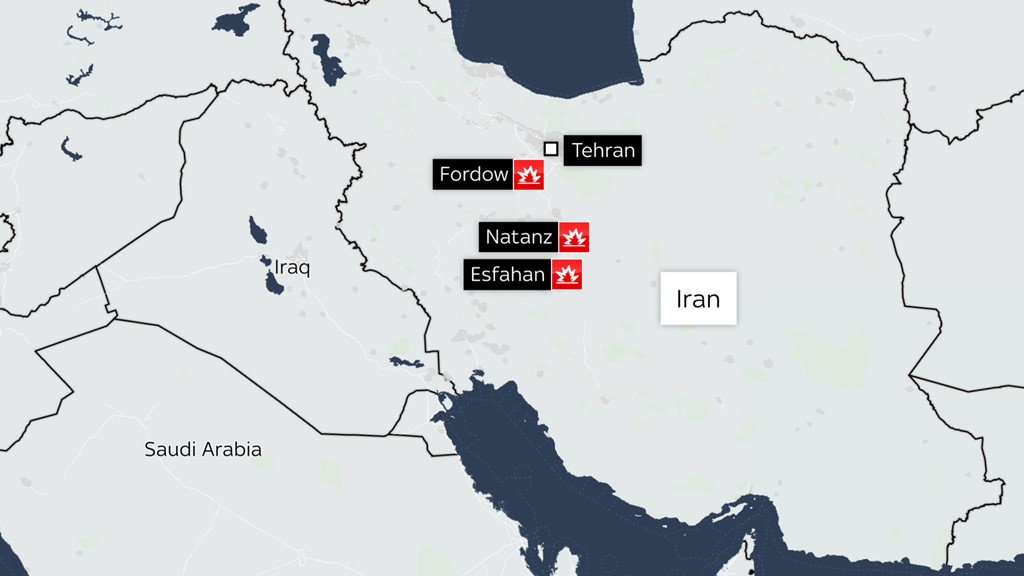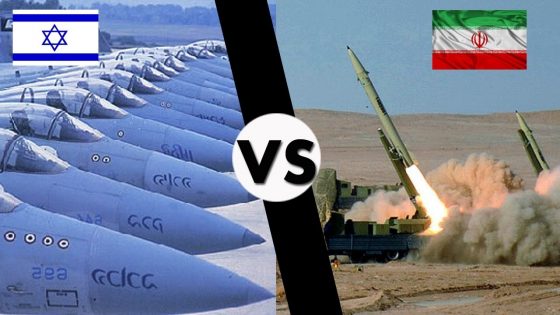In a historic and alarming development, the United States has formally entered the ongoing Israel–Iran conflict, marking a significant escalation with potentially far-reaching consequences for the entire Middle East and global geopolitical stability.
This intervention follows weeks of intensifying hostilities between Israel and Iran, with cross-border attacks, strikes on military assets, cyber warfare, and a growing toll on civilian populations. The U.S. decision to intervene signals that what began as a bilateral confrontation may now be transforming into a regional war with global implications.
🕊️ Background: How the Conflict Erupted
Tensions between Israel and Iran are nothing new. For decades, the two nations have engaged in proxy battles, covert operations, and rhetorical threats—but the past few months saw a dangerous shift from indirect to direct confrontation.
Key Triggers:
- Iran’s nuclear advancements, with enrichment levels approaching weapons-grade.
- Alleged Israeli strikes on Iranian military facilities and advisors in Syria and Lebanon.
- Iranian drone and missile attacks on Israeli infrastructure.
- A surge in Hezbollah activity near the northern Israeli border.
- Cyberattacks and sabotage operations, reportedly targeting sensitive utilities and military systems on both sides.
Following these developments, and after a major missile barrage allegedly launched from Iranian territory landed near Tel Aviv, the Israeli Defense Forces (IDF) launched a massive retaliatory strike targeting Iranian Revolutionary Guard assets in Syria and western Iran.

🇺🇸 Why the U.S. Is Getting Involved
1. Defense Commitments to Israel
As a long-standing ally of Israel, the U.S. has a policy of strategic deterrence and defense cooperation. Israel reportedly invoked mutual defense consultations under the 2020 Strategic Partnership Act, prompting the U.S. to act.
2. Security of Regional Bases
American military personnel and assets across the region—in Iraq, Syria, and the Gulf—were increasingly under threat, with multiple drone strikes reported on U.S. bases. The Pentagon confirmed injuries to U.S. troops and damage to military installations.
3. Global Oil Stability
Iran’s naval activity in the Strait of Hormuz, a vital chokepoint for global oil transport, has raised alarms. Disruption to tanker traffic or escalation into the Persian Gulf could skyrocket energy prices and cause global economic shockwaves.
4. Preventing a Wider War
The U.S. stated its intervention aims to contain the conflict and prevent regional powers like Saudi Arabia, the UAE, or Turkey from being drawn into the war, intentionally or otherwise.
🛡️ What U.S. Military Involvement Looks Like
As of now, the U.S. has deployed:
- Carrier Strike Group 9 to the Eastern Mediterranean.
- Additional F-22 and F-35 fighter squadrons to U.S. bases in Qatar and the UAE.
- Patriot and THAAD missile defense systems to bolster Israeli and Gulf defense.
- Special forces teams and intelligence assets for counterterrorism operations.
U.S. officials emphasize that this is not an invasion of Iran but rather a targeted operation focused on:
- Intercepting Iranian ballistic and cruise missiles
- Neutralizing Iran-backed militias in Iraq and Syria
- Defending Israel’s airspace and strategic locations
🔥 The Regional Fallout
Lebanon & Hezbollah
The most immediate regional flashpoint is southern Lebanon, where Hezbollah has launched coordinated attacks on northern Israel. Israeli strikes on Beirut suburbs and Hezbollah military positions have led to mass displacement.
Iraq and Syria
Iran-backed militias, including Kata’ib Hezbollah and Liwa al-Quds, have targeted both U.S. and Israeli-aligned forces. Syria is now once again at the heart of overlapping conflicts involving Iran, Israel, the U.S., and Russia.
Yemen and the Red Sea
The Houthi rebels in Yemen—closely allied with Iran—have escalated maritime threats, reportedly launching drones toward Israeli naval routes and even U.S. warships in the Red Sea.
Saudi Arabia, Jordan, and the UAE
These key regional players have called for restraint, with Saudi Arabia warning of “regional collapse” if diplomacy is not urgently pursued. Jordan has closed parts of its airspace, while the UAE has upgraded alert levels at major ports and airports.

🧭 Global Reaction and Diplomacy
United Nations
The UN Security Council has held emergency sessions but remains divided, with veto threats from permanent members. Secretary-General António Guterres has called the situation “the greatest threat to peace in the Middle East since 1973.”
NATO
While the conflict is outside the NATO area of operations, NATO countries are watching closely. Some European members have begun evacuating diplomats and nationals from hotspots like Baghdad and Tel Aviv.
China and Russia
Both nations have condemned the U.S. intervention, warning it could destabilize the region further. Russia has accused the U.S. of “fueling escalation,” while China has called for “immediate de-escalation and a return to dialogue.”
📈 Economic Impacts: Oil, Markets, and Inflation
Global markets responded swiftly:
- Oil prices surged past $120/barrel, the highest since 2022.
- Stock markets dipped across Asia, Europe, and North America.
- Defense stocks rallied, while airline and tourism sectors fell sharply.
- Gold and cryptocurrency prices spiked as investors fled to safe-haven assets.
This new phase of conflict could push global inflation upward, worsen supply chain issues, and hit emerging markets the hardest.
🧠 What Happens Next?
Possible Scenarios:
- Short-Term Military Containment
The U.S. may focus on missile defense, diplomacy, and limited strikes without escalating into a full-scale war. - Widening War
If Iran retaliates with broader attacks—including cyber or proxy strikes—more nations could be drawn in, potentially including Turkey or Pakistan. - Diplomatic Intervention
International actors like the UN, Vatican, or neutral states like Switzerland may attempt to mediate a ceasefire. - Nuclear Standoff
With Iran’s nuclear enrichment activities ongoing and Israeli leadership not ruling out preemptive strikes, the world watches anxiously for any movement toward a nuclear confrontation.
🔚 Conclusion: A Regional Tipping Point with Global Stakes
The official entry of the United States into the Israel–Iran war marks a pivotal moment in 21st-century geopolitics. What was once a covert shadow conflict has now exploded into an overt military clash with massive humanitarian, economic, and strategic implications.
As the world holds its breath, the urgent need for diplomacy, restraint, and multilateral cooperation has never been more critical. The coming days and weeks will determine whether this crisis is contained—or spirals into a broader regional war unlike any seen in decades.




